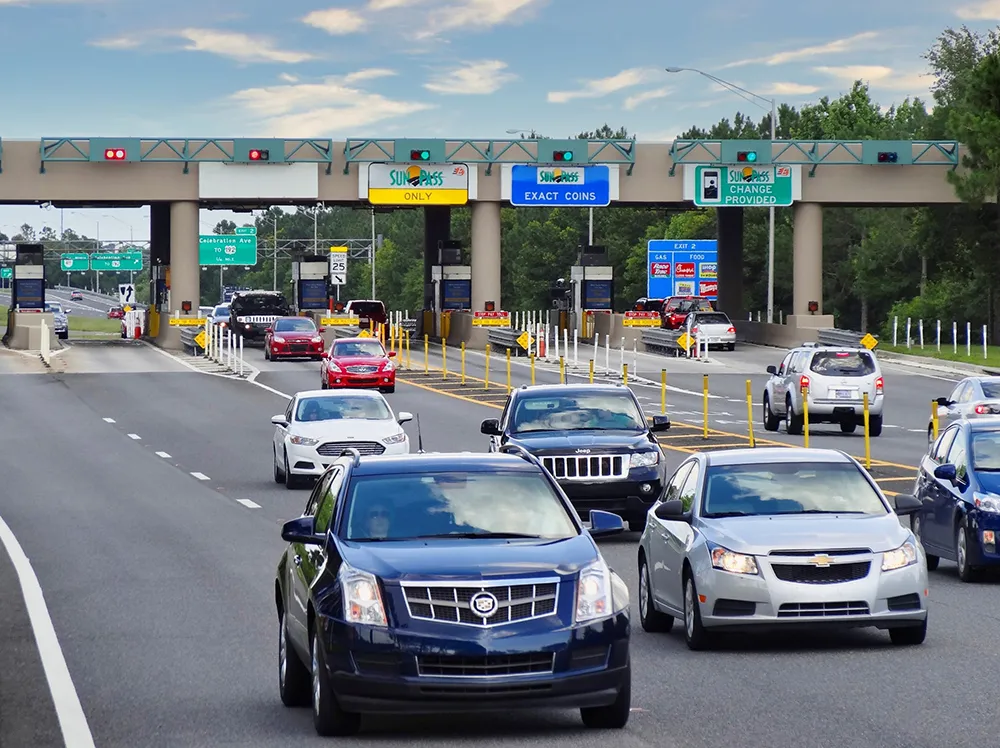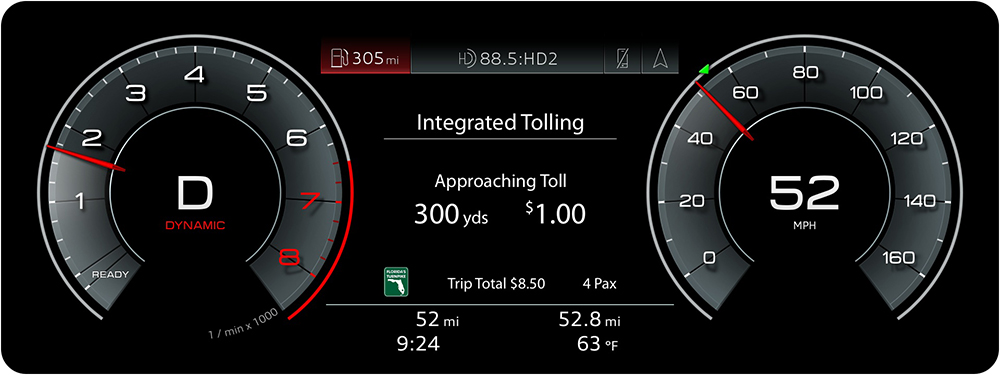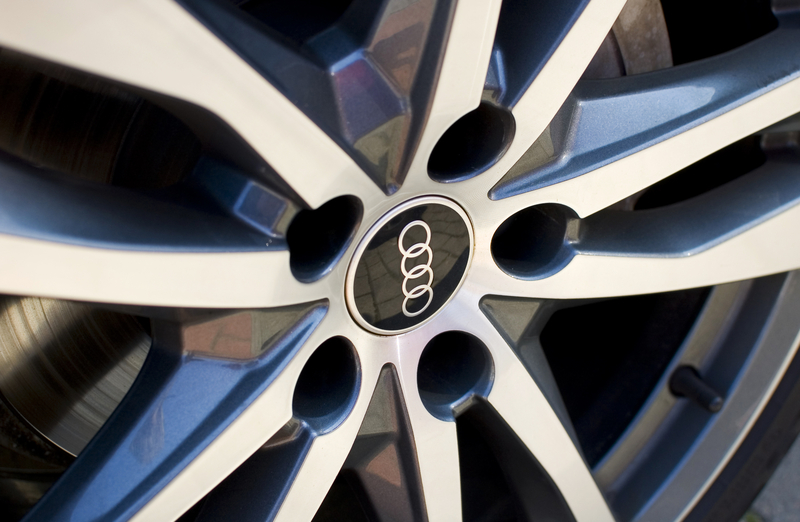
In North America, toll agencies and operators currently collect toll payments using traditional electronic transponders and video tolling. The processing and management of these transactions is complex, with extensive roadside infrastructure including classification devices, cameras, and RFID equipment to detect, identify, classify and post transactions.
Despite this investment, unregistered customers without accounts and transponders contribute between 15% and 20% of all overall transactions involving image review, invoicing, and collection efforts. Connected vehicle technologies applied in tolling can offer customers a seamless and frictionless option, thereby reducing the need for manual processing. In addition, there is potential that the lower 900 MHz used by tolling transponders will also be used for 5G-based position, navigation and timing (PNR), per the NextNav petition to FCC. This has motivated toll operators in North America to seek alternatives to current systems.
Next-generation toll payment
With this context, Florida’s Turnpike Enterprise (FTE), Indra, Audi and Qualcomm Technologies, Inc. have demonstrated next-generation toll payment using direct, low-latency cellular Vehicle to Everything (C-V2X) technology that allows vehicles to connect to roadside infrastructure. Connected vehicles send and receive data over the air using native radio receivers in vehicles that allow them to communicate with V2X-enabled infrastructure ¬¬technologies.
Several factors come together to enable toll collection based on this technology. In 2022, the Society of Automotive Engineers International (SAE) released a standard implementing tolling functionalities over V2X communication channels. This standard allows road operators to exchange additional functional parameters that could be leveraged to optimize operational efficiency by reducing the need for manual validation, invoicing, and collections. In addition, two recent government actions have just created a new C-V2X momentum in the U.S: the V2X National Deployment Plan released by USDoT in August 2024 and the FCC’s final decision on the C-V2X spectrum at the end of 2024, allowing C-V2X communication technology to be deployed in connected vehicles and roads, which will accelerate deployment.

Successful demonstration
Leveraging this momentum, FTE, Indra, Audi and Qualcomm Technologies at the recent OmniAir Plugfest testing event at central Florida’s Turnpike Enterprise SunTrax test facility showcased how motorists approaching a toll area received in-vehicle notifications with real-time tolling information, allowing drivers to review the toll rates and other details and confirm payments effortlessly. During the tests, Indra deployed a roadside unit that was able to generate V2X messages following the J3217 SAE standard incorporating all cybersecurity components, while Audi provided a vehicle equipped with a prototype C-V2X stack to validate the immediate and accurate transactions communications.
The core of this demonstration was based on the three V2X messages that the J3217 standard defines to exchange electronic toll collection (ETC) data between the roadside unit (RSU) and onboard equipment (OBE). Toll Advertisement Message (TAM): Messages broadcasted by an RSU that contain information on the variable toll road topology with accompanying toll rates by type of vehicle, supporting multiple categories, etc.
- Toll Usage Message (TUM): Messages sent from the onboard equipment to roadside unit containing information necessary for the toll operator’s to request payment to bill the customer.
- TUM Acknowledgment (TUM_ACK): An acknowledgment message (TUM ack message) is used to ensure data is secure and unique to a vehicle.
Transmitting key information
During the demonstration, Indra generated V2X messages transmitting key information for the vehicle to enable tolling services for the user. From the infrastructure, V2X messages were generated with information regarding toll type, toll charger, all toll fees, toll area coordinates, etc. Based on these V2X messages, the vehicle generated and displayed to the user the following two main messages:
- Toll information ahead based on the information received in the TAM message. The road user could see in their cockpit the toll charger information, the distance to the tolling area and the Toll Fee based on the information collected by the vehicle.
- Toll information history: by combining information from TAM messages and TUM_Ack messages, the user was able to visualize all toll trips performed on the in-vehicle platform.
At a cybersecurity level, it is essential to note that this demo adhered to all relevant security standards and recommendations, and all transmitted messages were signed according to 1609.2 using certificates and verified upon reception. Additionally, to enhance security, the TUM data was also encrypted in accordance with J3217.
Bringing more value to the demonstration, the tests were designed to bring C-V2X technology as an additional payment method to existing tolling payment methods currently in operation such as RFID and video-tolling. With this approach, Indra demonstrated how toll operators can accurately identify connected vehicles using C-V2X technology, distinguishing them from non-connected vehicles that use alternative toll payment methods such as transponder or toll-by-plate. Moreover, it was demonstrated how C-V2X technology provides accurate positioning to identify vehicles at the lane level. With this technology, vehicles can generate enhanced position information, supporting express lanes scenarios and other managed lanes services. From the vehicle side, Audi demonstrated how road users can enhance their experience when approaching tolling areas and be aware of the toll usage after a trip is concluded.

Operational benefits
A significant milestone of this demo has been to validate the operational benefits of this C-V2X technology for the tolling community, like reducing operational costs, enabling fast, efficient and secure toll collection, expanding the pool of known users and enhancing user experience.
This demo has proven the following benefits:
- Offer a ready-payment method for both frequent and occasional users, thereby reducing the need for manual image review, violations processing, invoicing, and collections from video tolling
- Potentially reduce the operational costs of selling and maintaining new transponders
- Demonstrate the viability of a potential national V2X toll ecosystem
Given the demo results, the relative maturity of the 2022 V2X toll standard (SAE J3217), the coalition of C-V2X deployment stakeholders in the US and the threat to the lower 900 MHz spectrum, now is the time to move and put this technology to work for tolling customers, augmenting existing ETCS technologies for motorist convenience and operator efficiency.
FTE, Indra, Audi and Qualcomm are committed to collaborating with the transportation industry to advance technology applications, such as connected vehicle tolling, creating a more seamless experience for road users and simplifying toll transaction processing.
Content produced in association with Qualcomm Technologies








